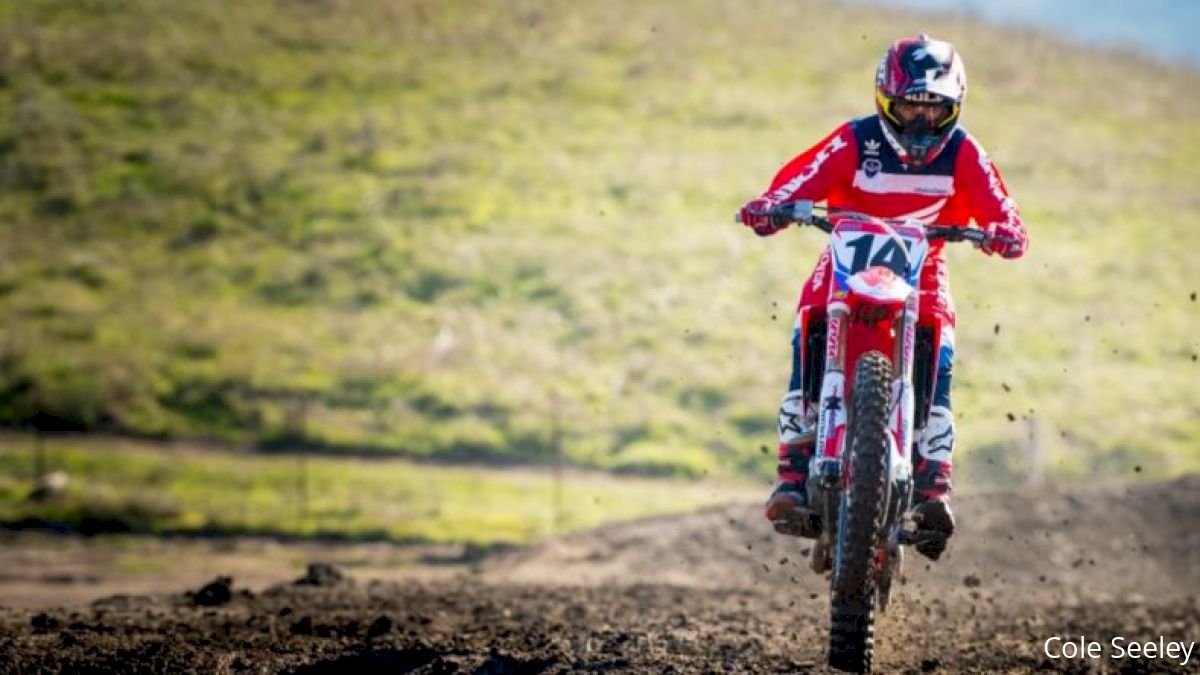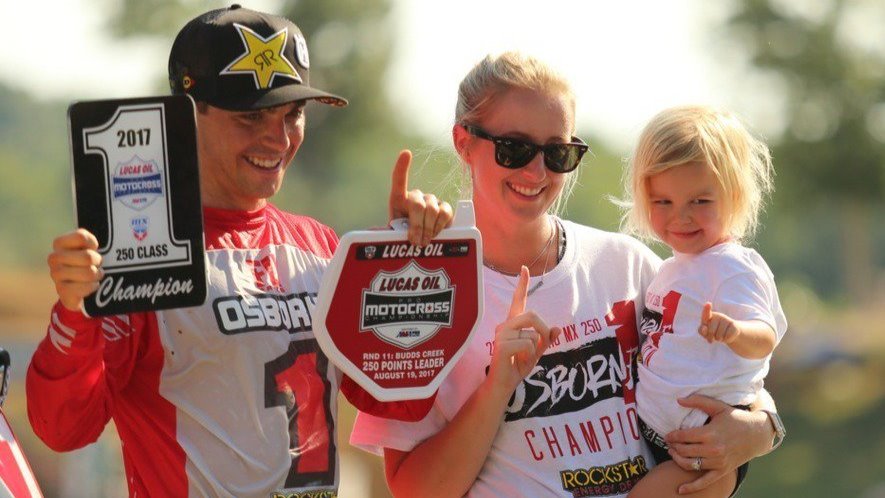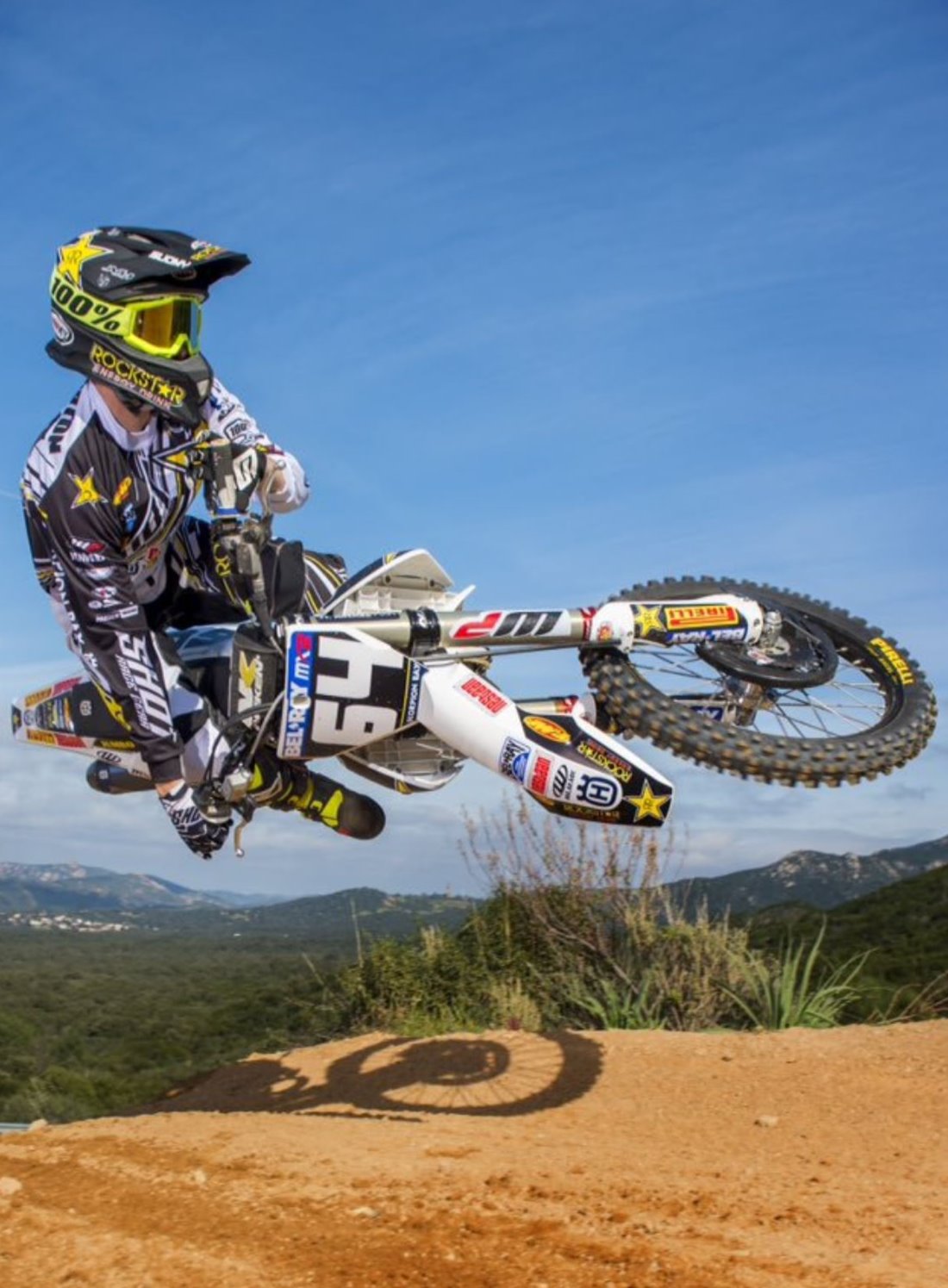The Motocross Of Nations Has Been Rough For America
The Motocross Of Nations Has Been Rough For America
America is betting on a handful of drivers in the Motocross of Nations and Cole Seeley is their best hope.

By Race Chapman
The professional motocross season is nearly never-ending. It starts with Supercross from January until May and then picks up again a few weeks later with the Lucas Oil Nationals, which run until August. After the Nationals end, there's another brief reprieve of a few weeks, until the Motocross of Nations (for a handful of riders) and the Monster Energy Cup. Finally there's a "long" two months before lining up for Supercross once more.
So, when a top-level rider opts out of racing the prestigious Motocross of Nations, it is understandable. It's a tough sport, and the riders are typically licking their wounds and attempting to test and train for Supercross.
It's understandable, but it's not any less disappointing. The biggest disappointment recently for Team USA is Eli Tomac's declination of the offer to lead the team at this year's MXoN at Matterley Basin in Winchester, United Kingdom, on Sept. 30 to Oct. 1.
There was a time, now fading into a memory, that the United States' racers were absolutely dominant. From 1981 to 1993, Team USA did not lose one time in the (then-named) Motocross des Nations. In fact, despite having a 34-year late start to earning a win, the United States leads the world in victories with 22 in total. The majority of those wins were achieved in that 12-year span in the 1980s and 1990s as well as a healthy seven-win streak from 2005 to 2011.
Since 2011, the Motocross of Nations has been rough for America. It always seems that our top riders become injured and require surgery and recuperation during that part of the year, or they just don't want to take the added risk and expense of traveling there. And even when they do make it over, bad luck often strikes.
It struck last year when Jason Anderson was landed on by an absolutely brainless rider from Japan while crossing the checkered flag.
France has the best momentum in that event right now, winning the last three years in a row. But this year Marvin Musquin will not be racing for the French (perhaps stemming from being "snubbed" last year by the team), and their team is considerably weaker than in years past. Dylan Ferrandis, for example, was selected to race the 250 machine for France but had an injury at the end of the regular season. His health will be in question for the event, and it's unlikely he'd take the risk of racing.
Where does that put Team USA? Well as we all know, Tomac doesn't want to do it. The racers representing Team USA this year are Cole Seely (in a 450), Thomas Covington (450), and Zach Osbourne (250).

Naturally, Osbourne is the clear favorite for the 250, as he has been obscenely fast and has absolutely dominated the 250 class in Lucas Oil Pro Motocross. But the other two selections have been hotly debated.
Going down from Tomac in the Nationals points standings, there is Marvin Musquin, Blake Baggett, Dean Wilson, and Seely rounding out the top five. Well, Musquin is French, Dean Wilson is Scottish and racing for Great Britain, and Blake Bagget requires surgery for his thumb and can't participate.
That leaves Team USA with Cole Seely as the most obvious selection for the 450. There have been some groans and disappointment with this decision, because Seely is not generally contending for wins and isn't the outright fastest rider at any given track. Some have suggested Justin Bogle, Cooper Webb, Weston Peick, or Jason Anderson as alternatives.
Aside from the fact that Webb and Anderson have recent injuries, an argument could be made for Bogle or Peick. However, when you look at the comparative results of Seely, it becomes fairly obvious why he was chosen over these other racers.
Seely has an average qualifying position of eighth place. In the MXGP format, qualifying is extremely important, because starting position is based on qualifying position throughout both motos. Bogle's average start is 10th, and Peick's is just under 13th.
 Bogle has had much more streaky results than Seely. He has won two motos and a holeshot, whereas Seely has neither. Their average starts (both seventh) and average finish (both ninth) are identical, but how they got there makes all the difference.
Bogle has had much more streaky results than Seely. He has won two motos and a holeshot, whereas Seely has neither. Their average starts (both seventh) and average finish (both ninth) are identical, but how they got there makes all the difference.
Despite the fact that Bogle has had those impressive results, he has also had very unimpressive finishes in other events, with no logical explanation. For example, after achieving his first win at Budds Creek, Maryland, he was only able to finish ninth overall at the season finale at Ironman Raceway in Crawfordsville, Indiana. Seely, on the other hand, finished fifth at Budds Creek and fourth at Ironman.
It is this consistency that makes Seely the more intelligent choice as the top rider in the Motocross of Nations. As the points are combined and the lowest result dropped, you want someone who can consistently finish well and is not likely to have an abysmal moto. Bogle is more likely to win a moto than Seely, but Bogle is also more likely to drop one.
Covington is an excellent choice as the Open Class rider. His career has been in MXGP primarily, which means he knows both the tracks and the competitors. He has raced Matterley Basin in recent years, which means he'll be able to provide crucial information to his teammates about the track.
Additionally, Covington has been no slouch in the MXGP series this year. Anyone who doubts this should watch his incredible come-from-behind performance at Uddevalla in Sweden, where he made a last-lap, last-corner pass on one of the series leaders for the moto win.
Another benefit to Covington is one of a more political nature. Typically, American racers are rivals and not on the same team. This means that they have to set aside their differences and come together out of national pride. However, because Covington never races his teammates during the regular season, they will have no preconceived notions or rivalries with each other.
The same is true for Seely and Osbourne, since they are in different classes during the year. It should make the atmosphere a bit more relaxed, and perhaps allow for a little bit better openness when sharing bike setup and track secrets.
Of course, it would be ideal if Tomac would join Team USA; there's no disputing that. But Americans should not count out their team just because the top dog isn't on it. Seely is a very technical racer and has lots of great attributes that will be beneficial to this type of event.
Besides, underdog stories are much more exciting.
Joey Crown Builds Foundation For Improvement
Justin Cooper, Fifth In First Pro Race
Tomac Will Earn Title, But Not Ambassadorship
Keep The Loretta's Competitive
Eli Tomac Extends Lead In Spite Of Challenges
Motocross Is A War Of Attrition
The Beginning of a Beautiful Rivalry
Justin Cooper's Successful Amateur Swan Song
Exclusive One-On-One With Joey Crown Before The Mammoth Mountain MX
The professional motocross season is nearly never-ending. It starts with Supercross from January until May and then picks up again a few weeks later with the Lucas Oil Nationals, which run until August. After the Nationals end, there's another brief reprieve of a few weeks, until the Motocross of Nations (for a handful of riders) and the Monster Energy Cup. Finally there's a "long" two months before lining up for Supercross once more.
So, when a top-level rider opts out of racing the prestigious Motocross of Nations, it is understandable. It's a tough sport, and the riders are typically licking their wounds and attempting to test and train for Supercross.
It's understandable, but it's not any less disappointing. The biggest disappointment recently for Team USA is Eli Tomac's declination of the offer to lead the team at this year's MXoN at Matterley Basin in Winchester, United Kingdom, on Sept. 30 to Oct. 1.
There was a time, now fading into a memory, that the United States' racers were absolutely dominant. From 1981 to 1993, Team USA did not lose one time in the (then-named) Motocross des Nations. In fact, despite having a 34-year late start to earning a win, the United States leads the world in victories with 22 in total. The majority of those wins were achieved in that 12-year span in the 1980s and 1990s as well as a healthy seven-win streak from 2005 to 2011.
Since 2011, the Motocross of Nations has been rough for America. It always seems that our top riders become injured and require surgery and recuperation during that part of the year, or they just don't want to take the added risk and expense of traveling there. And even when they do make it over, bad luck often strikes.
It struck last year when Jason Anderson was landed on by an absolutely brainless rider from Japan while crossing the checkered flag.
France has the best momentum in that event right now, winning the last three years in a row. But this year Marvin Musquin will not be racing for the French (perhaps stemming from being "snubbed" last year by the team), and their team is considerably weaker than in years past. Dylan Ferrandis, for example, was selected to race the 250 machine for France but had an injury at the end of the regular season. His health will be in question for the event, and it's unlikely he'd take the risk of racing.
Where does that put Team USA? Well as we all know, Tomac doesn't want to do it. The racers representing Team USA this year are Cole Seely (in a 450), Thomas Covington (450), and Zach Osbourne (250).

Naturally, Osbourne is the clear favorite for the 250, as he has been obscenely fast and has absolutely dominated the 250 class in Lucas Oil Pro Motocross. But the other two selections have been hotly debated.
Going down from Tomac in the Nationals points standings, there is Marvin Musquin, Blake Baggett, Dean Wilson, and Seely rounding out the top five. Well, Musquin is French, Dean Wilson is Scottish and racing for Great Britain, and Blake Bagget requires surgery for his thumb and can't participate.
That leaves Team USA with Cole Seely as the most obvious selection for the 450. There have been some groans and disappointment with this decision, because Seely is not generally contending for wins and isn't the outright fastest rider at any given track. Some have suggested Justin Bogle, Cooper Webb, Weston Peick, or Jason Anderson as alternatives.
Aside from the fact that Webb and Anderson have recent injuries, an argument could be made for Bogle or Peick. However, when you look at the comparative results of Seely, it becomes fairly obvious why he was chosen over these other racers.
Seely has an average qualifying position of eighth place. In the MXGP format, qualifying is extremely important, because starting position is based on qualifying position throughout both motos. Bogle's average start is 10th, and Peick's is just under 13th.
 Bogle has had much more streaky results than Seely. He has won two motos and a holeshot, whereas Seely has neither. Their average starts (both seventh) and average finish (both ninth) are identical, but how they got there makes all the difference.
Bogle has had much more streaky results than Seely. He has won two motos and a holeshot, whereas Seely has neither. Their average starts (both seventh) and average finish (both ninth) are identical, but how they got there makes all the difference.Despite the fact that Bogle has had those impressive results, he has also had very unimpressive finishes in other events, with no logical explanation. For example, after achieving his first win at Budds Creek, Maryland, he was only able to finish ninth overall at the season finale at Ironman Raceway in Crawfordsville, Indiana. Seely, on the other hand, finished fifth at Budds Creek and fourth at Ironman.
It is this consistency that makes Seely the more intelligent choice as the top rider in the Motocross of Nations. As the points are combined and the lowest result dropped, you want someone who can consistently finish well and is not likely to have an abysmal moto. Bogle is more likely to win a moto than Seely, but Bogle is also more likely to drop one.
Covington is an excellent choice as the Open Class rider. His career has been in MXGP primarily, which means he knows both the tracks and the competitors. He has raced Matterley Basin in recent years, which means he'll be able to provide crucial information to his teammates about the track.
Additionally, Covington has been no slouch in the MXGP series this year. Anyone who doubts this should watch his incredible come-from-behind performance at Uddevalla in Sweden, where he made a last-lap, last-corner pass on one of the series leaders for the moto win.
Another benefit to Covington is one of a more political nature. Typically, American racers are rivals and not on the same team. This means that they have to set aside their differences and come together out of national pride. However, because Covington never races his teammates during the regular season, they will have no preconceived notions or rivalries with each other.
The same is true for Seely and Osbourne, since they are in different classes during the year. It should make the atmosphere a bit more relaxed, and perhaps allow for a little bit better openness when sharing bike setup and track secrets.
Of course, it would be ideal if Tomac would join Team USA; there's no disputing that. But Americans should not count out their team just because the top dog isn't on it. Seely is a very technical racer and has lots of great attributes that will be beneficial to this type of event.
Besides, underdog stories are much more exciting.
Weekly Articles from Race Chapman
The #1 Plates Are Already Stamped For TomacJoey Crown Builds Foundation For Improvement
Justin Cooper, Fifth In First Pro Race
Tomac Will Earn Title, But Not Ambassadorship
Keep The Loretta's Competitive
Eli Tomac Extends Lead In Spite Of Challenges
Motocross Is A War Of Attrition
The Beginning of a Beautiful Rivalry
Justin Cooper's Successful Amateur Swan Song
Exclusive One-On-One With Joey Crown Before The Mammoth Mountain MX